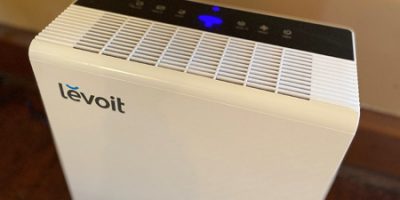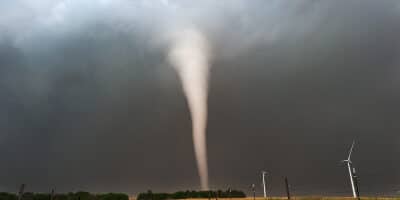
Your home weather station should give you years of trouble-free performance. However, to extend the life of your weather station and to retain its accuracy, you should perform routine maintenance and inspections to make sure the individual sensors are clean, free of debris and in working order.
How often depends on where you live, most of us in temperate regions should be able to get away with only performing these tasks once a season. However, in harsher climates, like dust storm-prone desert areas or other areas that experience extremes in weather, you may need to perform maintenance on your weather station on a monthly basis or even sooner.
Watch the video above from Davis Instruments to learn how to maintain your personal weather station properly. We’ve also taken some time to write out our own recommendations below. The instructions should work for just about any station you might own, from the Davis Vantage Pro2 in the video above to cheaper stations from AcuRite, Ambient Weather, and others.
Recalibration
Home weather stations use digital sensors, while to begin with they are accurate—over time the sensors can drift from their initial values. Our experience has shown that most stations will need little if any recalibration over their usable life, but we’ve seen some stations require regular recalibration due to lower quality sensors or oversensitivity to rapidly changing conditions.
You’ll likely never need to adjust your temperature, wind speed, or direction readings as long as you keep it well maintained. However, over time (and occasionally from the factory) your humidity, barometric pressure and rainfall readings may drift.
Follow the instructions in your station’s user manual to tweak these readings. If possible, use an official NWS reporting station as your “control,” and recalibrate your readings according to that station. You can use other personal weather stations, but keep in mind these stations may not be calibrated correctly either or sited correctly. However, if your readings are dramatically different from everybody else’s, you can safely assume something’s wrong.
We recommend that you continuously keep an eye on the accuracy of your weather station’s readings and recalibrate as often as needed, even between maintenance cycles. This helps you spot problems before they become serious ones.
Check Your Siting
During maintenance, you always want to confirm that your siting, or your station mount and its position is still optimal. Is the station level (essential for the rain gauge's accuracy)? Is your mounting pole in good shape? Are there any new obstructions which might cause your readings to be inaccurate? Does anything look broken? Are all screws and attachments secure? We recommend you remove your station from the mount to perform any maintenance, so this is an excellent time to check.
Individual Instrument Maintenance
Each sensor on your weather station has a specific set of best practices to keep them operating in an optimal condition. We’ve included some tips below for the most common instruments found on personal weather stations.
Temperature and Humidity Sensors
Your temperature and humidity sensors will typically not require regular maintenance, but cheaper sensors are prone to drift over time. Dirt and debris may accumulate on the radiation shielding during the summer, and ice and snow during the winter. Wipe the shielding with a damp cloth to ensure that nothing is obstructing the airflow. If you have concerns about dust getting on the sensors, remove the shielding and gently brush off the mesh that is protecting these sensors with a dry soft toothbrush.
Anemometers and Wind Vanes
Most weather stations use a cup system to measure wind speed (some do not, we’ll get into that shortly). Ensure the bearings are clean, and that the cups spin freely. If they do not, typically there’s a “set screw” that can be loosened a bit to ensure smooth operation. Clean the cups with warm. If these tips do not fix any issues, contact the manufacturer as the bearings may have gone bad. The maintenance procedures for your wind vane, as well as potential troubles, are pretty much the same as the anemometer. Just check the orientation of the wind vane annually to ensure accurate directional readings.
Sonic Anemometers
A few personal weather stations make use of sonic technology to measure wind speed and direction. Here you’ll need to make sure the space within the unit is continuously free of obstructions (in our testing, we found this challenging during snowfalls and winter weather). Again, use warm water to clean, and don’t use any cleaning agents.
Rain Gauges
Just about every personal weather station uses a “tipping bucket” mechanism to measure rainfall. The mechanism is covered by a funnel, which directs falling rain into the tipping buckets. These funnels can easily become clogged by dirt, debris, and even bird droppings. Remove the funnel and clean it thoroughly. While the funnel is off, also inspect the tripping buckets inside. Ensure that these are also clean and free of any insects and debris.
If you are having a serious issue with bird droppings, installing some type of deterrent around the rim of the funnel to prevent them from landing on it may help to alleviate the problem (the Davis Vantage Pro2 comes with bird spikes from the factory—see the video).
Solar Panels and Batteries
The solar panels on your station provide the power to send your readings back to your console and need to be clean to generate sufficient, uninterrupted power. Regularly ensure these are as clean as possible by wiping them with a damp cloth.
While cleaning your solar panels, it’s also an excellent time to change the backup batteries. Most station owners will be able to get away with only replacing these once a year. If your station uses rechargeable batteries, refer to the instruction manual for the manufacturer’s guidelines regarding replacement.
Always use lithium batteries. Lithium batteries perform far better in colder climates, and overall they’ll power your station for longer, saving you money on replacement costs. Standard alkaline batteries are known to lose power in the cold and even freeze.
Solar Radiation and UV Sensors
You can use a damp cloth to clean the solar radiation and UV sensors as well. Make sure not to touch the diffusers with your hands as you can leave oils behind which can leave the sensors inaccurate.
Leaf Wetness Sensors
If you own a Davis Vantage Pro2 with the optional leaf wetness sensor, keep the surface clean of dirt and debris with a clean, soft toothbrush and water.
Final Thoughts
We hope this helps answer any questions you might have about regular maintenance of your home weather station. Remember to follow the manufacturer’s instructions as most manuals will have a section on maintenance. If you have any specific questions about a particular model, feel free to ask us in the comments. If you have any additional tips for others, feel free to share them as well!




